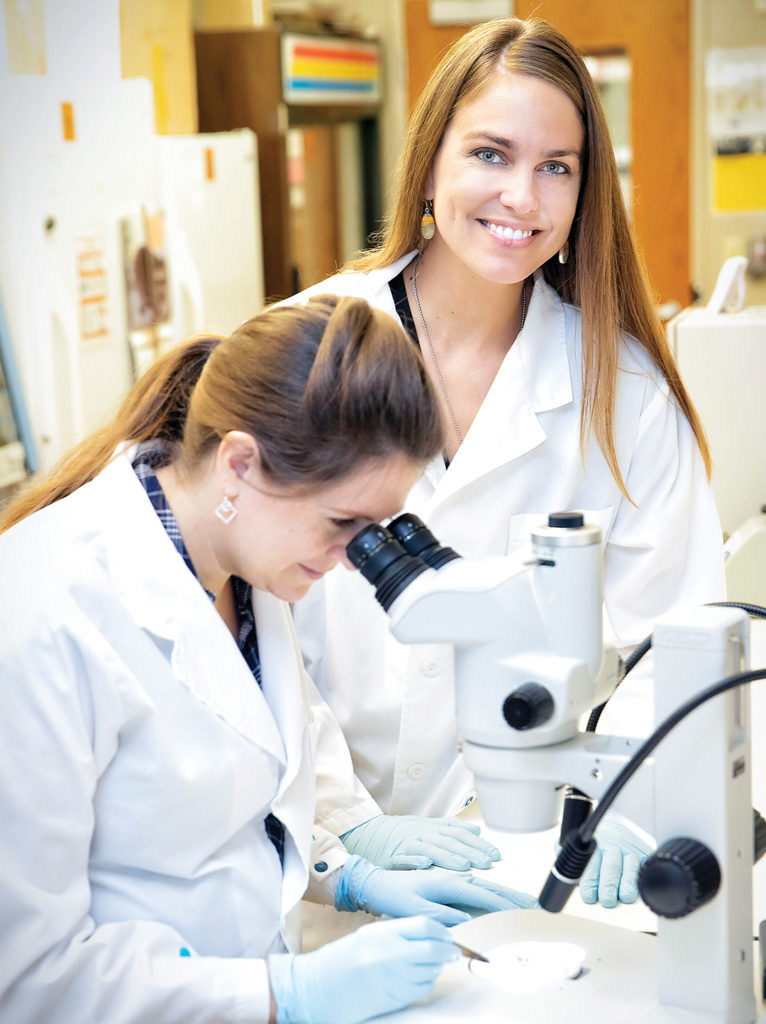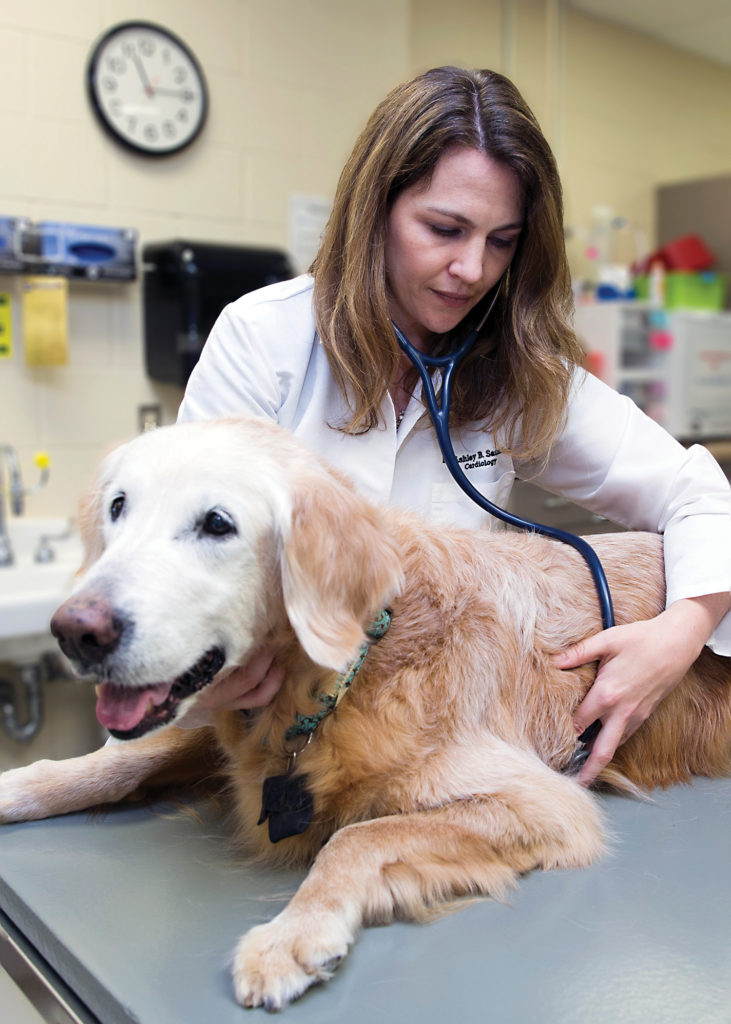Hearts and Minds
Story by Briley Lambert
A team of academic researchers and a Small Animal Hospital clinician have come together for the health and safety of dogs working at the U.S. border.

Dogs working at the United States-Mexico border face daily obstacles as they endeavor to keep the country safe from terrorism and criminal trafficking, but a team of researchers at the Texas A&M College of Veterinary Medicine & Biomedical Sciences (CVM) and its Small Animal Hospital (SAH) is working to ensure that Chagas disease is not one of those obstacles.
Working with Dr. Ashley Saunders, a cardiologist at the SAH, CVM associate professor Dr. Sarah Hamer and recent doctoral graduate Alyssa Meyers have spent the past four years examining the impending health implications of Chagas disease and the effect this disease has on the U.S. Department of Homeland Security (DHS) working dogs’ ability to work.
As a result of their early findings, last year, the team received DHS funding to complete the third phase of the study, which is also being done in collaboration with the Institute for Infectious Animal Diseases (IIAD) at Texas A&M.
Chagas disease, caused by the protozoan parasite Trypanosoma cruzi, is transmitted through kissing, or conenose, bugs. While Chagas disease has long been known in Central and South America, there is now increasing awareness for the disease in the southern United States where kissing bugs occur.
Hamer, Meyers, and Saunders all have devoted portions of their research to understanding the full impact of Chagas disease. When they began looking at government working dogs across the U.S.—and not just on the southern border—they found that approximately 7 percent were exposed to the parasite that causes Chagas disease.
“The DHS maintains more than 3,000 working dogs across the country, including the security dogs at the airports, customs and border protection dogs, Coast Guard dogs, federal protective service dogs, and secret service dogs,” Meyers explained. “These are highly valuable dogs, often selected for their drive and pedigree, and, unfortunately, our initial research found that up to 18 percent of the working dogs along the Texas-Mexico border were positive for exposure to T. cruzi, the Chagas parasite.”
The team has now narrowed the research to understand the long-lasting health implications of Chagas disease in these working dogs, a project that has required Hamer and Meyers to take trips to the border several times a year to assess the dogs while on the job.
“It’s pretty cool work because we’re intercepting these border patrol dogs while they’re working,” Hamer said. “We just want a glimpse, to take a blood sample, monitor their heart, and we want to put on a Fit Bark—which is like a Fit Bit, but for dogs—all while they’re still working and doing their normal jobs.”

Because Chagas disease can cause acute or chronic heart disease or death in dogs and humans, Saunders, who has worked with Hamer for years on Chagas-related research to help with the project, came aboard to evaluate the tests used to assess the dogs for heart disease.
“The collaboration with Dr. Hamer’s lab is important for advancing our understanding of Chagas disease from all aspects—the epidemiology of the disease, the vectors, and the dogs themselves,” Saunders said. “It is a more effective way to work and learn and has been invaluable.”
Their work also has potential to affect the work Saunders does in the SAH every day, she said.
“We routinely see dogs with heart disease attributed to Chagas disease,” she said. “For clinical patients, the disease can be difficult to manage and prognosis can be poor with no available treatment. This is frustrating for owners and us.
“Getting involved in this research allows us to better understand the disease and treat our patients,” she said.
Because there is no vaccination to prevent Chagas disease in humans or animals, and treatment is limited, Meyers said the team also plans to use this grant to focus on what can be done to control the kissing bugs and prevent transmission.
“Vector control includes things like clearing brush where kissing bugs can dwell from around kennels and houses, minimizing the use of light at night because kissing bugs are drawn to light, and securing access to kennels, to prevent bugs from getting in,” Meyers said.
Although securing the kennels may seem like an easy fix, it can be a costly and challenging intervention for these facilities, which house dozens of dogs, according to Hamer.
Along with studying Chagas disease, Hamer’s team will be using the grant to study other vector-borne diseases—including those spread by ticks and mosquitoes—that may impact these working dogs.
“Because these working dogs spend lots of time outside where they may be exposed to vectors, they may provide a sensitive indication of the different vector-borne infections across the landscape that are not only important for dog health, but also human health,” Hamer said. “Our studies will have an increased focus on what we can do to ensure these animals remain healthy. We’re excited that Texas A&M University is helping secure the health of these important animals that are on the front lines of security for our country.”
###
Note: This story originally appeared in the Fall 2019 edition of CVMBS Today.
For more information about the Texas A&M College of Veterinary Medicine & Biomedical Sciences, please visit our website at vetmed.tamu.edu or join us on Facebook, Instagram, and Twitter.
Contact Information: Jennifer Gauntt, Director of CVMBS Communications, Texas A&M College of Veterinary Medicine & Biomedical Sciences; jgauntt@cvm.tamu.edu; 979-862-4216



